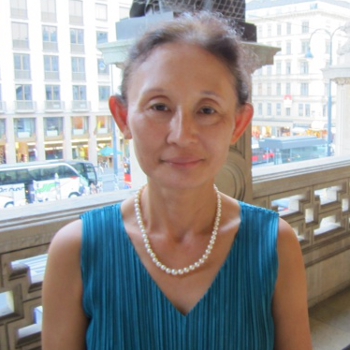The première of the Metropolitan Opera’s new production of La traviata had the buzz of an opening night of a new season. It was the first performance conducted by Yannick Nézet-Séguin after he assumed the position of the Music Director. Already, changes are in the air. Mr Nézet-Séguin invited the orchestra to take the stage at the end of the performance and he sent each audience member out into the cold December night with the gift of a small bottle of Prosecco. Michael Mayer's new production, opulent and colorful, does not offer any new insights but is a straightforward presentation of the tragic life and love of a Parisian courtesan, set in the mid-19th century, when the opera was composed. The musical performance was high quality, with Nézet-Séguin’s meticulous attention to detail highlighting the Met Orchestra’s brilliance while giving room for singers to breathe, express and act Verdi’s masterpiece.
Following Mr Mayer’s conception of the production as Violetta’s flashback of the last year of her life just before her death, set designer Christine Jones created a single room where all the action takes place. As the prelude began, a dark scrim with a large image of a pink camellia gave way to a room with a semi-cylindrical wall with tall windows and gold filigree. Violetta lay in bed in the middle, surrounded by her lover Alfredo, his father Germont, her maid Annina, and her doctor. She rose to find others frozen in action, only to be drawn out of the room at the end of the prelude to her death. There was a young woman seated behind Alfredo: his sister. This silent character made additional appearances during Germont’s appeal to Violetta to break from Alfredo for the sake of his family in Act 2, and during the Act 3 prelude, walking through Violetta’s room dressed in a wedding gown. Neither of Mr Mayer’s ideas, staging the opera beginning with Violetta’s death, nor seeing Alfredo's sister, is new, and did little to add to the drama. I found the presence of the young woman distracting.
There was exceptional work by lighting designer Kevin Adams, who illuminated the set with exquisite colors to evoke the four seasons of Violetta’s final year. The party scene in the spring was marred by costumes that were too kitsch, but the masked ball featured subdued bronzed rusty colors appropriate to the autumn, and Lorin Latarro's “dance of the dead” ballet was choreographed with dynamism. While one may question the ubiquity of the bed, a single set gave coherence to the production whose focus was on Violetta’s recollections. If acting by singers felt constrained and lacking in spontaneity, it showed that Violetta was alone in her suffering, with those surrounding her unable to reach her.
Mr Nézet-Séguin brought out dynamism in the score, both in volume and tempo. If his focus on lyricism and expansive melodies resulted in languid tempi and lack of forward momentum at times, especially in Act 2, there were moments of quiet beauty when the orchestra was asked to play pianissimo. Tenor Juan Diego Flórez made his role debut as Alfredo, his ringing top and exquisite legato from his years as a bel canto specialist still his major strength. He sang with consistent elegance throughout; perhaps not an impetuous and spontaneous Alfredo, but one has to admire his remaining true to his voice and style. Baritone Quinn Kelsey possesses a sumptuous rich voice and can sustain long lines, a true Verdi baritone. His was the most polished and complete vocal performance of the evening, although he remained somewhat wooden on stage.
Soprano Diana Damrau’s first Violetta was five years ago, and her mastery of the role was evident this evening. Her voice was never large but its silvery tone was on full display. She met the varied vocal challenges of Violetta – coloratura in Act 1, lyric in Act 2, and spinto in Act 3 – with poise, technique and courage. Her scenes with Mr Kelsey in Act 2 and with Mr Florez in Act 3 were the highlights of the evening, as her voice expressing emotional turmoil poured out and blended with the male voices. The Met Chorus made a strong contribution in Acts 1 and 2 party scenes in their nuanced singing. Under Mr Nézet-Séguin, the orchestra was not a simple accompaniment to the singers but rather became another of the opera's voices, from the soft prelude with its aching violin lines to Violetta’s death scene.
This extravagant new production was conventional – the singing was not always perfect but heartfelt, the orchestral playing was fresh and never routine. A mixed evening, but a promising start for the new Music Director.




